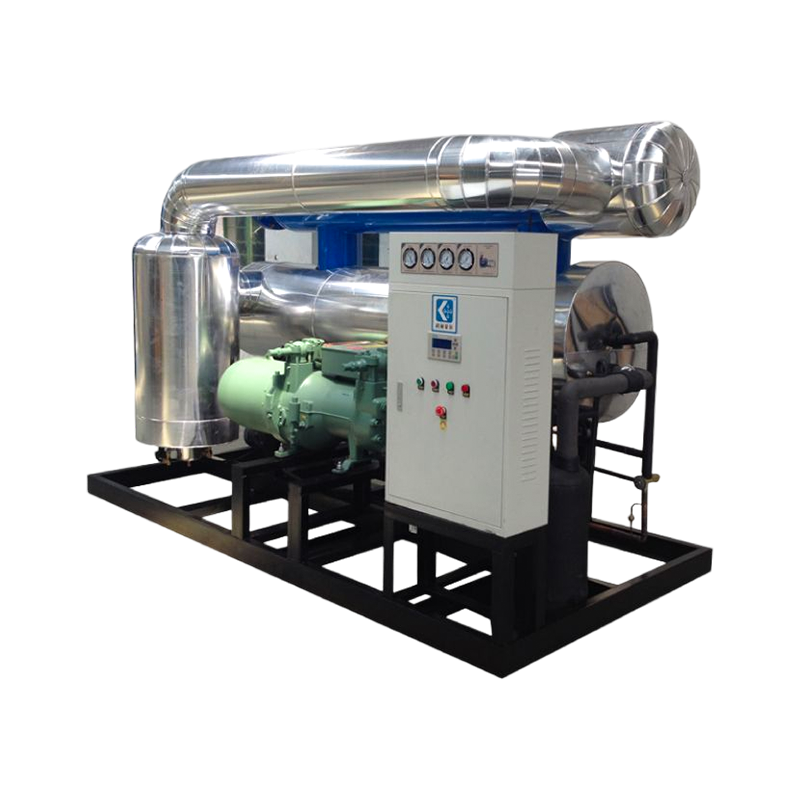In the "13th Five-Year" development plan of the compressed air purification industry, the economic operation, development achievements, existing problems and "13th Five-Year" development ideas and goals of the industry were proposed, which was very encouraging. In order not to take detours on the road of development, it is very necessary to review the development experience and lessons of the purification industry.
As an independent industry group, the compressed air purification industry started in the early 1990s. Around 90 years ago, freeze dryers emerged in Hangzhou, Wuxi and other places, developed rapidly, and were likely to replace desiccators in some industries.
Under the premise of meeting the quality requirements of compressed air in all walks of life, the rise of cold dryers has greatly reduced the energy consumption of the compressed air drying process. It can be said that the early and mid-1990s was the golden period for the development of the purification industry.
In the mid-1990s, the commercial competition in the purification industry was sufficiently fierce. Especially in Jiangsu, Zhejiang, Guangdong and other traditional market-economy-developed regions, large-scale peer gatherings were rapidly formed, which greatly promoted the popularization and application of compressed air post-treatment. But don’t go against your word, the market competition with low-price competition and shoddy products as the main means has finally led to a large-scale decline in product quality and reputation, and the consequences continue to be distressing to this day.
Regardless of the reason why the technical level of cold dryers or desiccators has not increased but declined for more than ten years, it seems that the "big environment" has caused difficulties in the operation of production enterprises. Cutting corners and having no other way" has unfortunately become a reality. But at a deeper level, it is the inevitable result of the industry generally not paying attention to "technical ethics".
The specific manifestations are: some products with backward technology or even eliminated come out again - the representative products include "deliquescence dryer" and "heating regeneration dryer"; some products that have not been theoretically proven, have no data support, and obviously violate the laws of physics Products such as "slight heat", "light air volume", "deep dew point", "multi-in-one" and "zero emission" have taken the opportunity to become popular. If this momentum is not effectively contained, it will inevitably affect the normal development of the compressed air dryer industry. Therefore, what compressed air purification equipment needs to do now is to "rectify the source" rather than the so-called "upgrade".
Modern industry puts forward high requirements on the quality of compressed air, among which water removal and drying is an inevitable energy-consuming link in the "purification" of air sources.
There are many kinds of compressed air dehydration drying methods, but only freeze drying and adsorption drying are suitable for large-scale and continuous production. These two methods have a long history, but only after modern industry can provide the required materials, components and process technology, they are popularized and promoted. Many of them are the scope of application of freeze dryers, and only a few industries (processes) must use adsorption dryers. This is also the reason for the rapid development of freeze dryers in the first half of the 1990s - after all, reducing energy consumption is an important measure to save business costs.
Freeze dryer is the internationally recognized mainstream equipment for compressed air drying. In most application fields, the atmospheric dew point of the freeze dryer -20°C can meet the actual needs. There are only a few processes that have strict requirements on water content. Only heatless regenerative dryers have a chance to show their talents - high energy consumption restricts its application, while heating regenerative dryers with backward technology (no matter where the heat source comes from) may only be used under low pressure, small flow, discontinuous, etc. used.


Larger refrigeration air dryer is adopted with screw type refrigerant compressor and high efficient shell tube exchanger. Available in capacities from 160 to 510m3/min.
System with Siemens PLC controller
Inlet temperature less than 45℃ (ADH: less than 80℃)
Cooling water pressure: 2-4bar
Cooling water temperature less than 32℃
Dew-point: 2-10℃
Refrigerant: R407c

 English
English Español
Español










